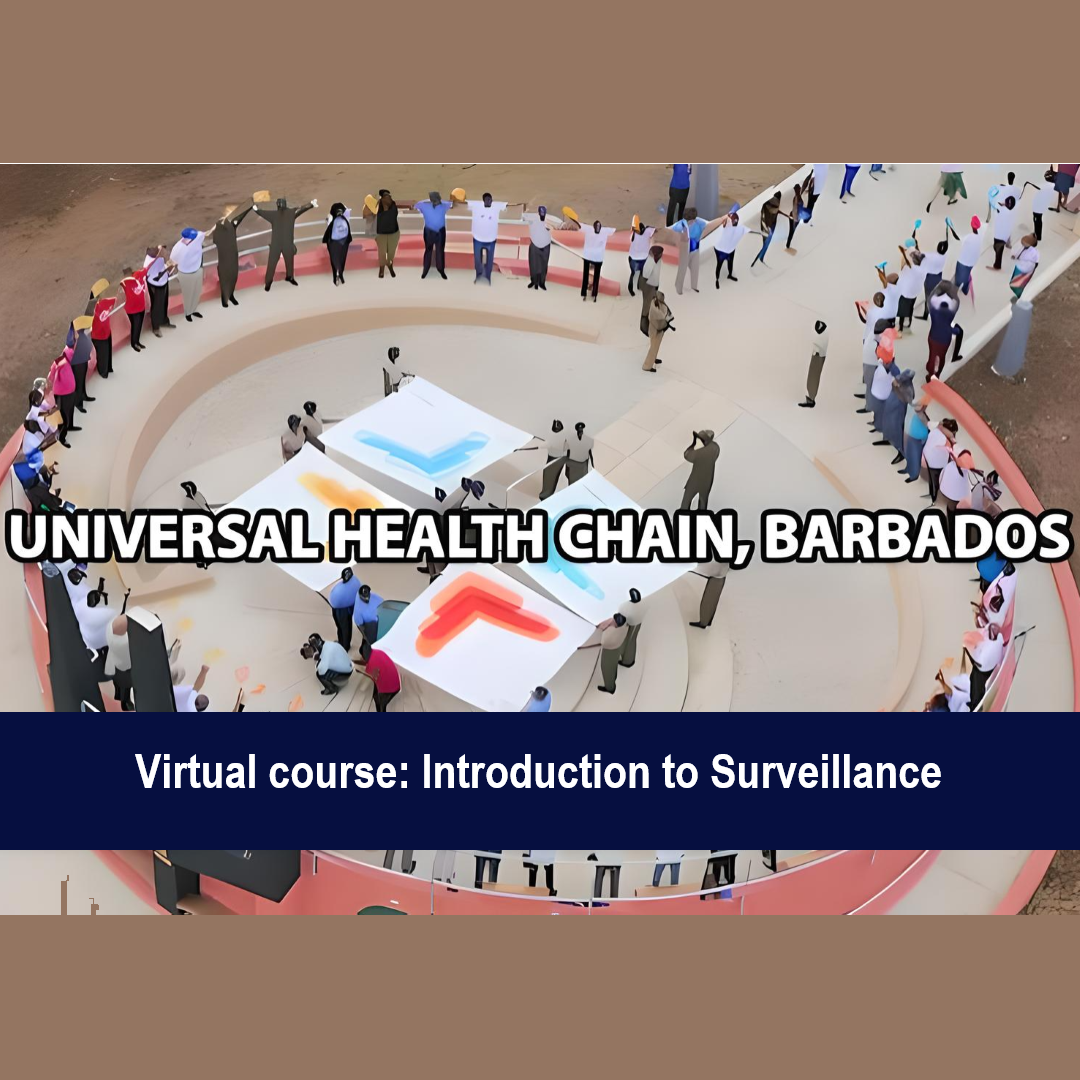Introduction to Surveillance (Open Educational Resource)

This course has ended. It was offered from October 2019 to December 2019. Here you can access the different knowledge resources (bibliography, readings, videos, guides, etc.), used during the course.
The communication spaces, exchange forums, and some activities/materials have been hidden because they were for exclusive use of the course participants.
No certificates will be issued for visiting these materials.
These are materials developed for teaching purposes in the context of the VCPH.
Please note that some materials may not be updated or there might be more recent versions, and the ones that are included here are only an archive of Campus resources.
Public health surveillance is the ongoing, systematic use of health-related information to guide public health action in a timely fashion. Health surveillance systems involve data collection, collation, analysis, interpretation, and dissemination. Health surveillance has evolved to inform and direct public health action over the short term, for example, in an infectious disease outbreak situation and over the longer term in relation to the prevention and control of infectious and chronic disease, congenital anomalies, injury, and other health-related events.
The scope of health-related events involved in public health surveillance is ever expanding to meet the emerging and re-emerging public health challenges of the day.
This course will provide a review of public health surveillance, with reference to the regional and international situation. The course has been designed to assist public health practitioners and other health professionals in acquiring the knowledge, skills, and attitudes necessary to contribute to and use public health surveillance systems to move data to information to intelligence to action in their individual workplaces. In the course, public health surveillance and health surveillance will be used synonymously. Surveillance is a widely-used term, particularly in reference to public security; these surveillance systems will not be considered here.
Purpose
This course aims to advance your knowledge and ability to participate in the various aspects of the public health surveillance cycle and to use public health surveillance systems to move data from information to action in the workplace. Learning materials focus on the dissemination of public health surveillance data and information through an overview of the basic principles, followed by a review of some surveillance products and International surveillance systems. The course includes only an outline of the basic principles, skills and strategies of communicating data effectively as these items are the subject of SUR 2: Communicating Data Effectively.
Objectives
Upon completion of this course, you will:
- Have an increased knowledge of the principles and practices of contemporary public health surveillance;
- Have enhanced skills related to the practice of public health surveillance.
Competencies
Successful completion of this module contributes to your attainment of the following core competencies for public health as defined in the PAHO Regional Framework for Core Competencies in Public Health:
- Situational analysis
- Surveillance and control of risks and injuries
Structure
- Lesson 1 provides an overview of the principles of health surveillance, its use and brief consideration of ethical, legal, and international aspects.
- Lesson 2 identifies some major public health surveillance systems in the Caribbean and internationally and considers the characteristics, strengths, and limitations of these public health surveillance systems.
- Lesson 3 discusses the integration, analysis, and interpretation of public health surveillance data.
- Lesson 4 presents the key concepts and basic principles in the dissemination of public health surveillance information in both outbreak and non-outbreak situations. An examination of some of the major surveillance products follows, noting some of the significant strengths and limitations of these publications.
- Lesson 5 introduces recent developments and other approaches to public health surveillance that go beyond the basic cycle of surveillance presented in previous lessons.
